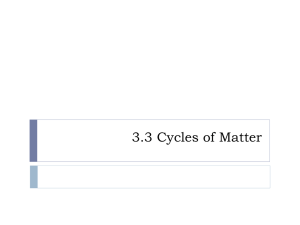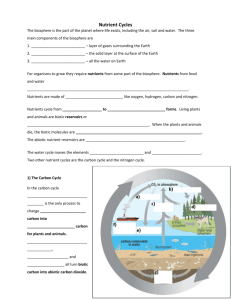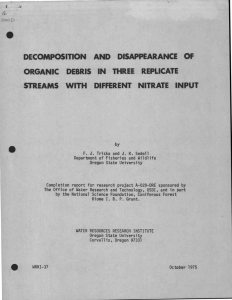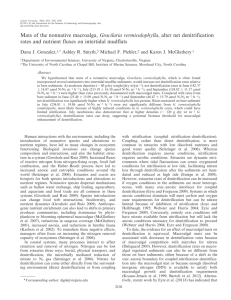Reading Questions McDowell, W.H. 1998. Internal fluxes in a Puerto
advertisement
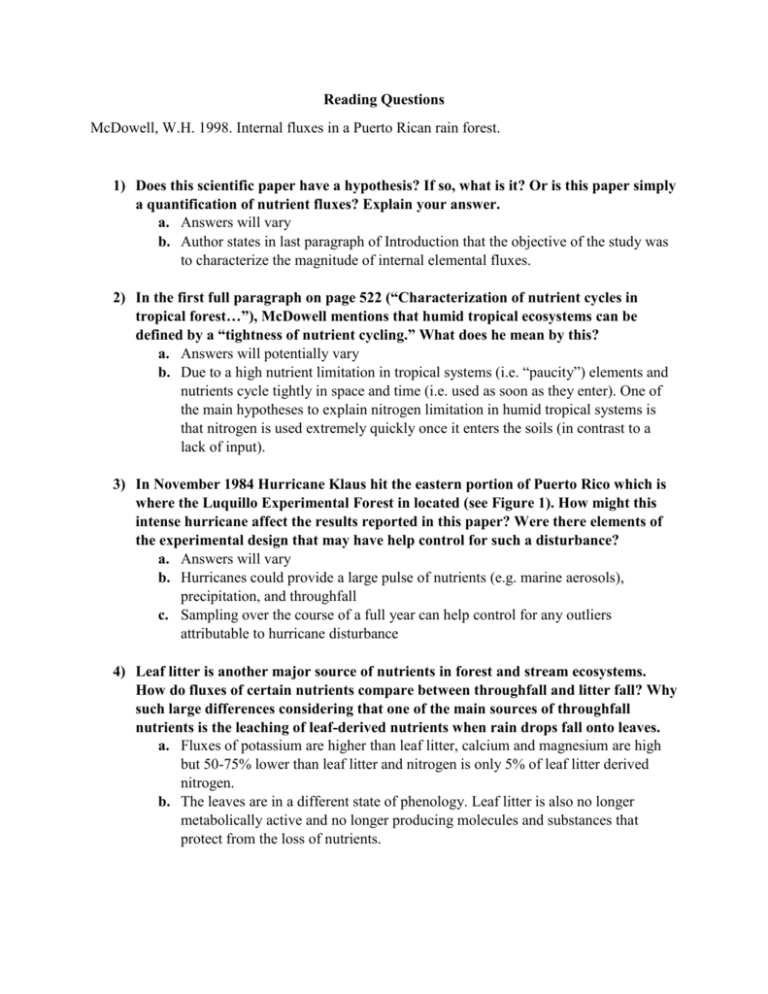
Reading Questions McDowell, W.H. 1998. Internal fluxes in a Puerto Rican rain forest. 1) Does this scientific paper have a hypothesis? If so, what is it? Or is this paper simply a quantification of nutrient fluxes? Explain your answer. a. Answers will vary b. Author states in last paragraph of Introduction that the objective of the study was to characterize the magnitude of internal elemental fluxes. 2) In the first full paragraph on page 522 (“Characterization of nutrient cycles in tropical forest…”), McDowell mentions that humid tropical ecosystems can be defined by a “tightness of nutrient cycling.” What does he mean by this? a. Answers will potentially vary b. Due to a high nutrient limitation in tropical systems (i.e. “paucity”) elements and nutrients cycle tightly in space and time (i.e. used as soon as they enter). One of the main hypotheses to explain nitrogen limitation in humid tropical systems is that nitrogen is used extremely quickly once it enters the soils (in contrast to a lack of input). 3) In November 1984 Hurricane Klaus hit the eastern portion of Puerto Rico which is where the Luquillo Experimental Forest in located (see Figure 1). How might this intense hurricane affect the results reported in this paper? Were there elements of the experimental design that may have help control for such a disturbance? a. Answers will vary b. Hurricanes could provide a large pulse of nutrients (e.g. marine aerosols), precipitation, and throughfall c. Sampling over the course of a full year can help control for any outliers attributable to hurricane disturbance 4) Leaf litter is another major source of nutrients in forest and stream ecosystems. How do fluxes of certain nutrients compare between throughfall and litter fall? Why such large differences considering that one of the main sources of throughfall nutrients is the leaching of leaf-derived nutrients when rain drops fall onto leaves. a. Fluxes of potassium are higher than leaf litter, calcium and magnesium are high but 50-75% lower than leaf litter and nitrogen is only 5% of leaf litter derived nitrogen. b. The leaves are in a different state of phenology. Leaf litter is also no longer metabolically active and no longer producing molecules and substances that protect from the loss of nutrients. c. McDowell makes the important point that even though some throughfall fluxes are relatively small (e.g. nitrogen) they still may be ecologically important as they are readily soluble and bioavailable. 5) At the end of the paper McDowell mentions that fluxes of inorganic N are much higher than levels of inorganic N in the stream runoff. Why are the processes of plant uptake and denitrification important at the ecosystem level? a. Plant uptake is the process of removing nitrate or ammonium from the soil and using it to build plant biomass. Denitrification is the microbial process of converting nitrate to N2 gas which is returned to the atmosphere. Both process remove nitrogen from the soils; however, only denitrification permanently removes nitrogen from the system. Removal of nitrogen prior to entering the downstream export via streams potentially can reduce eutrophication of downstream systems.



